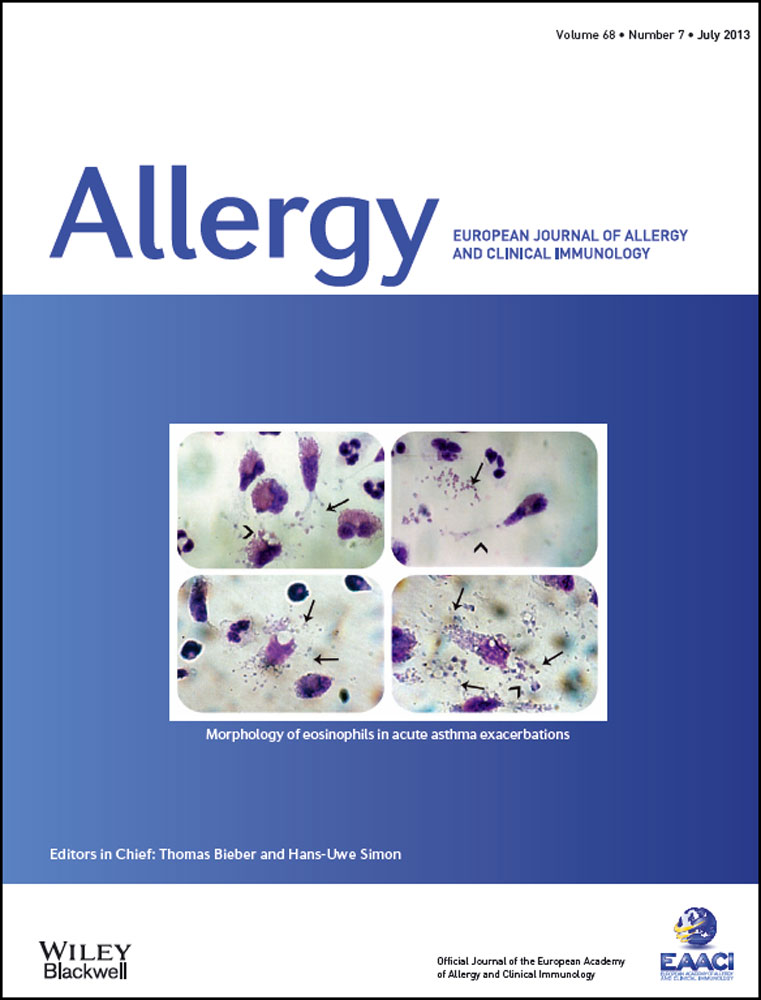Frequent sensitization to Candida albicans and profilins in adult eosinophilic esophagitis
Abstract
Background
Eosinophilic esophagitis (EoE) is often associated with atopic airway and skin diseases. More than 80% of EoE patients are sensitized to aero- and/or food allergens. Immunoglobulin (Ig)E-mediated immune responses to microbes have been reported to be deleterious in connection with atopic diseases.
Aim
The aim of this study was to obtain a comprehensive overview about the sensitization spectrum of adult EoE patients.
Methods
IgE in sera of 35 patients with active EoE were analyzed for reactivity to Candida albicans, as well as to a panel of recombinant and purified natural allergen components, using a microarray.
Results
IgE sensitization to Candida albicans was found in 43% of EoE patients. More than 80% of EoE patients were sensitized to aeroallergens and 22% to food-specific allergen components, whereas 69% of the patients exhibited specific IgE to cross-reactive allergens. Among the latter, profilins were identified as most frequent IgE cross-reactive allergen components. Interestingly, dysphagia, the main symptom of adult EoE patients following rice and/or bread ingestion, was associated with sensitization to cross-reactive allergens such as profilins, pathogenesis-related (PR) 10 and lipid transfer proteins (LTP). Intolerance toward meat rarely correlated with sensitization to animal food allergens.
Conclusion
Candida albicans and cross-reactive plant allergen components, in particular profilins, were identified as frequent sensitizers in adult EoE patients. Specific elimination therapies are suggested to reveal their actual roles in the pathogenesis of EoE.




